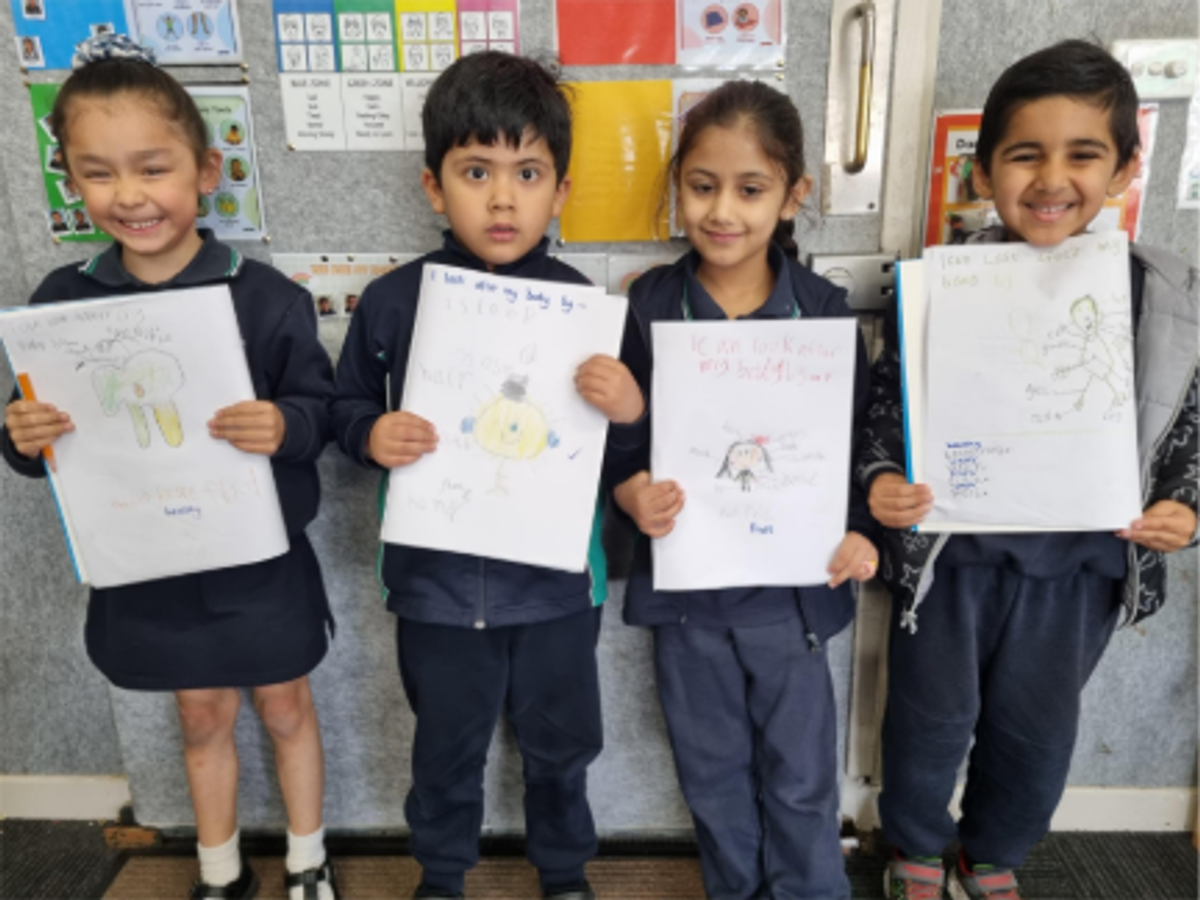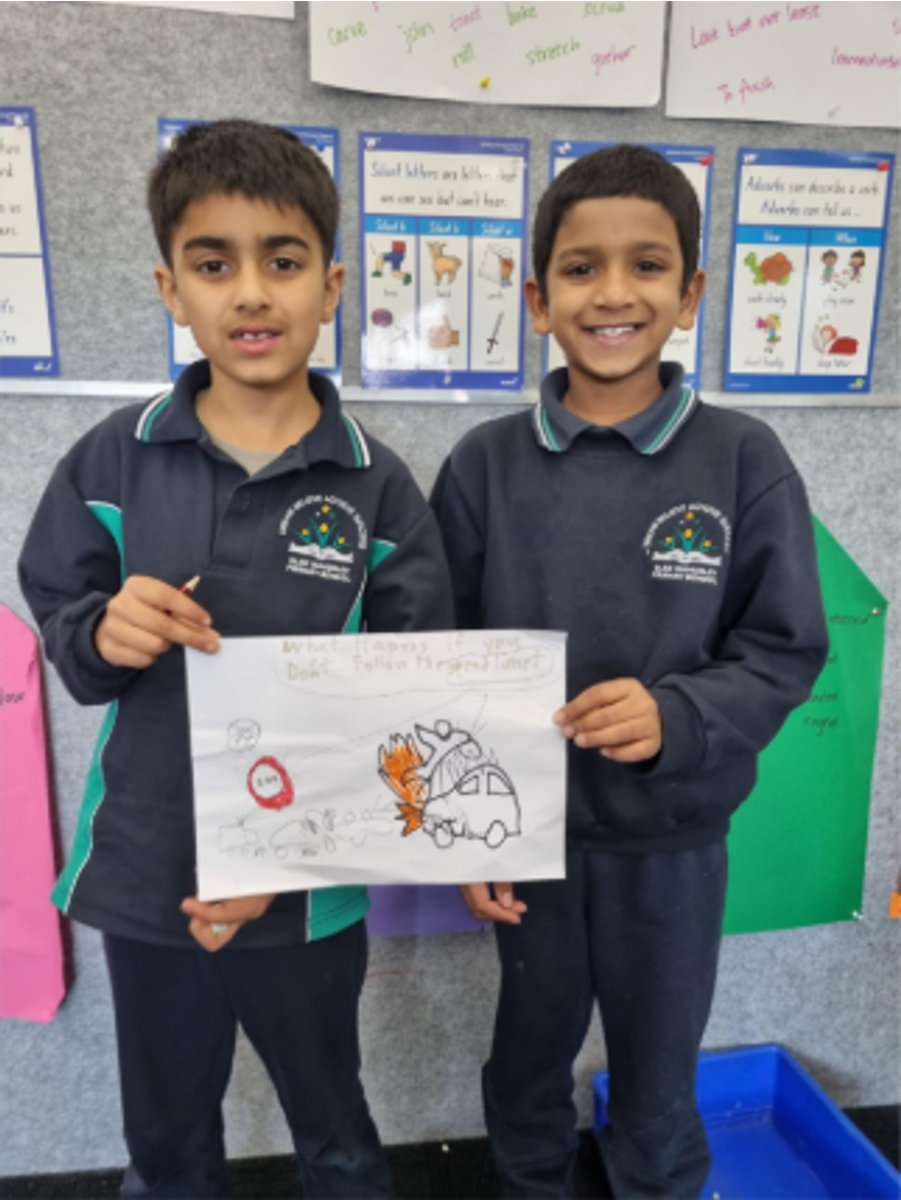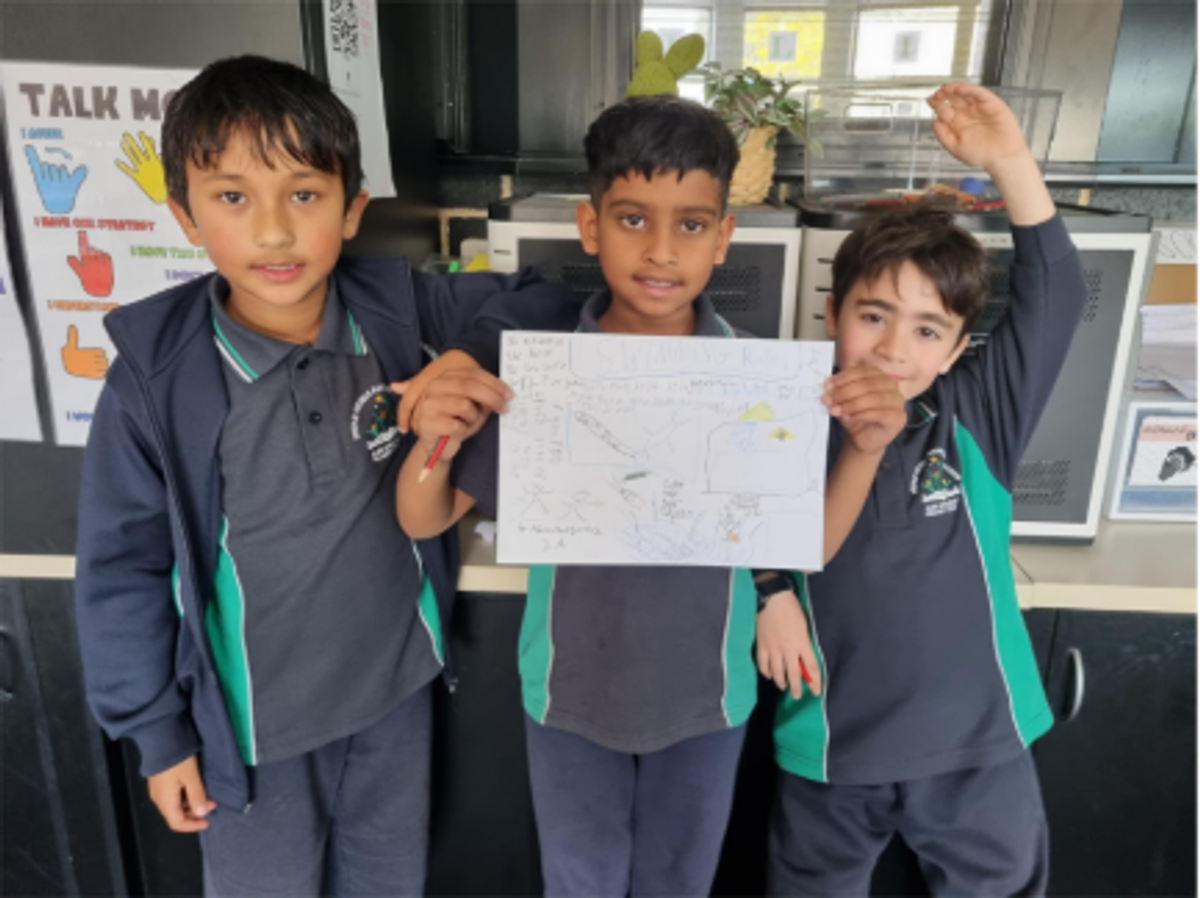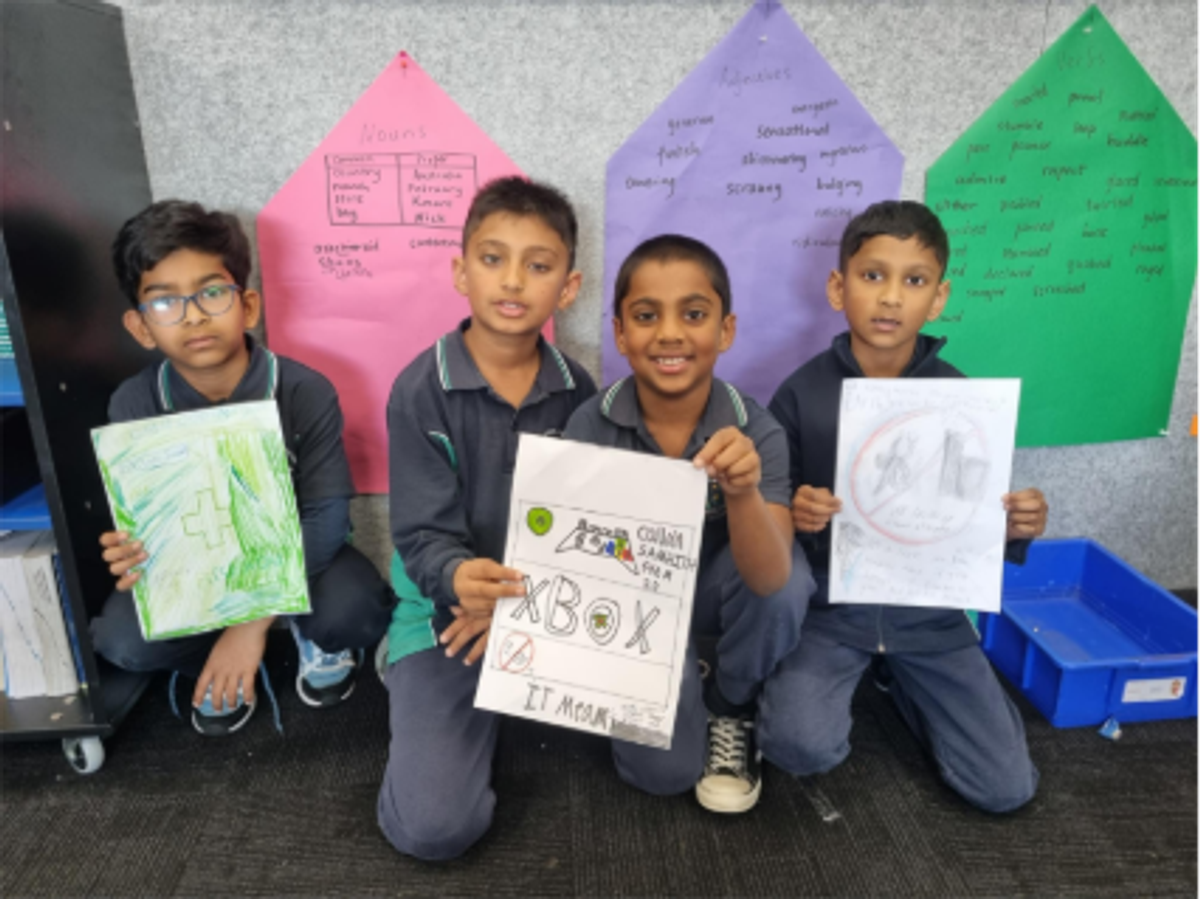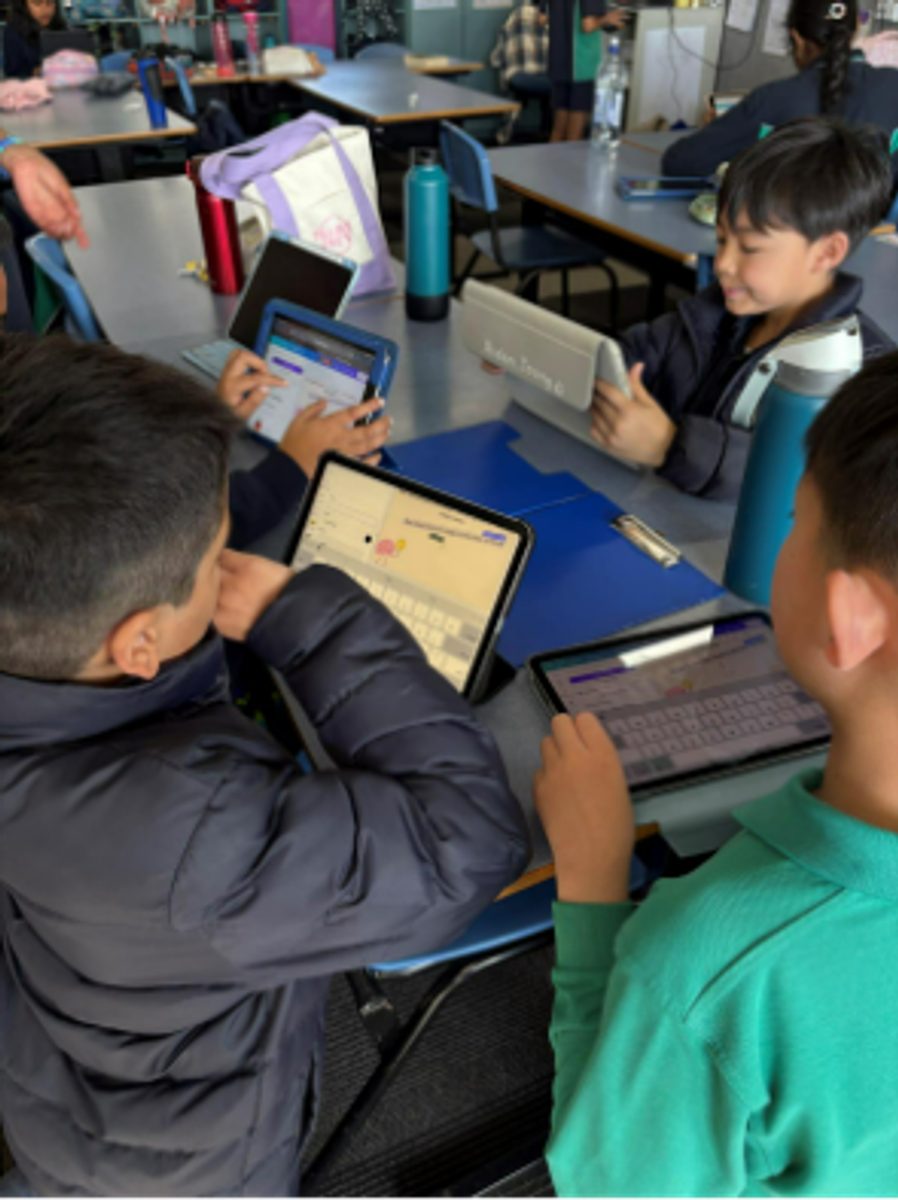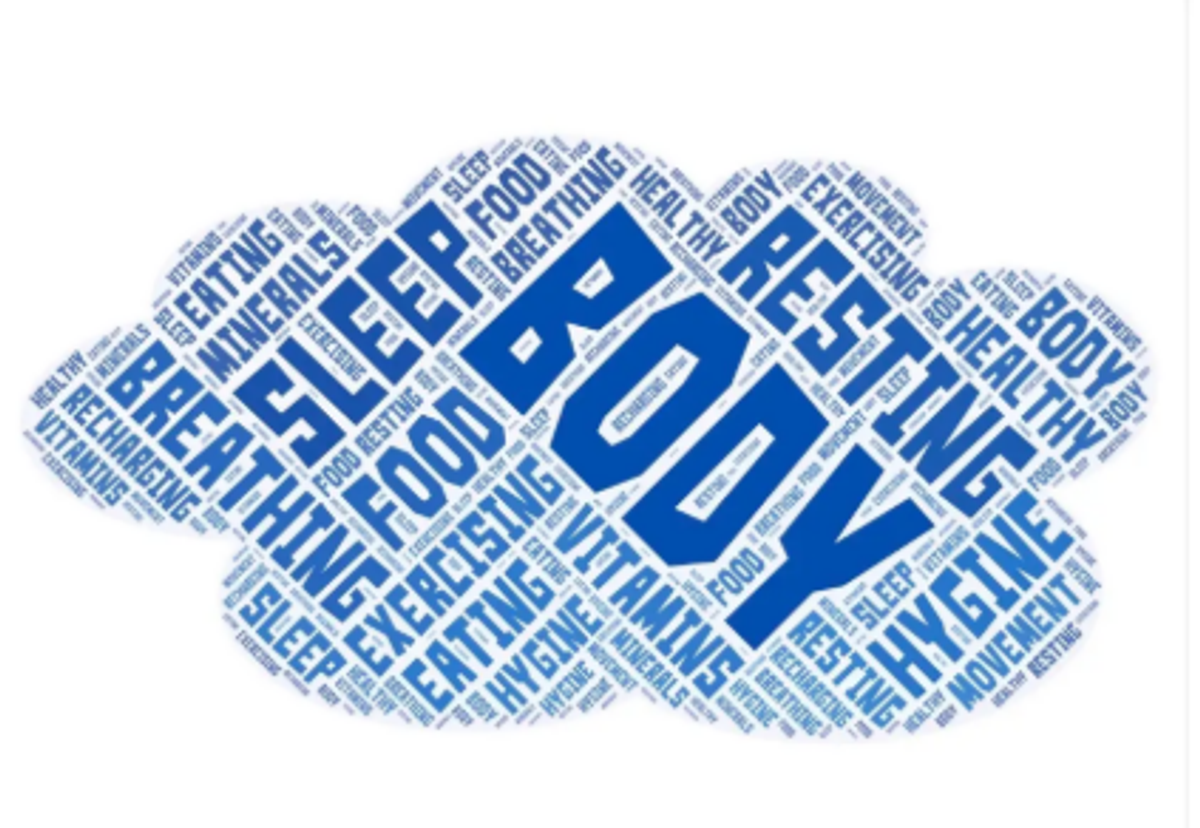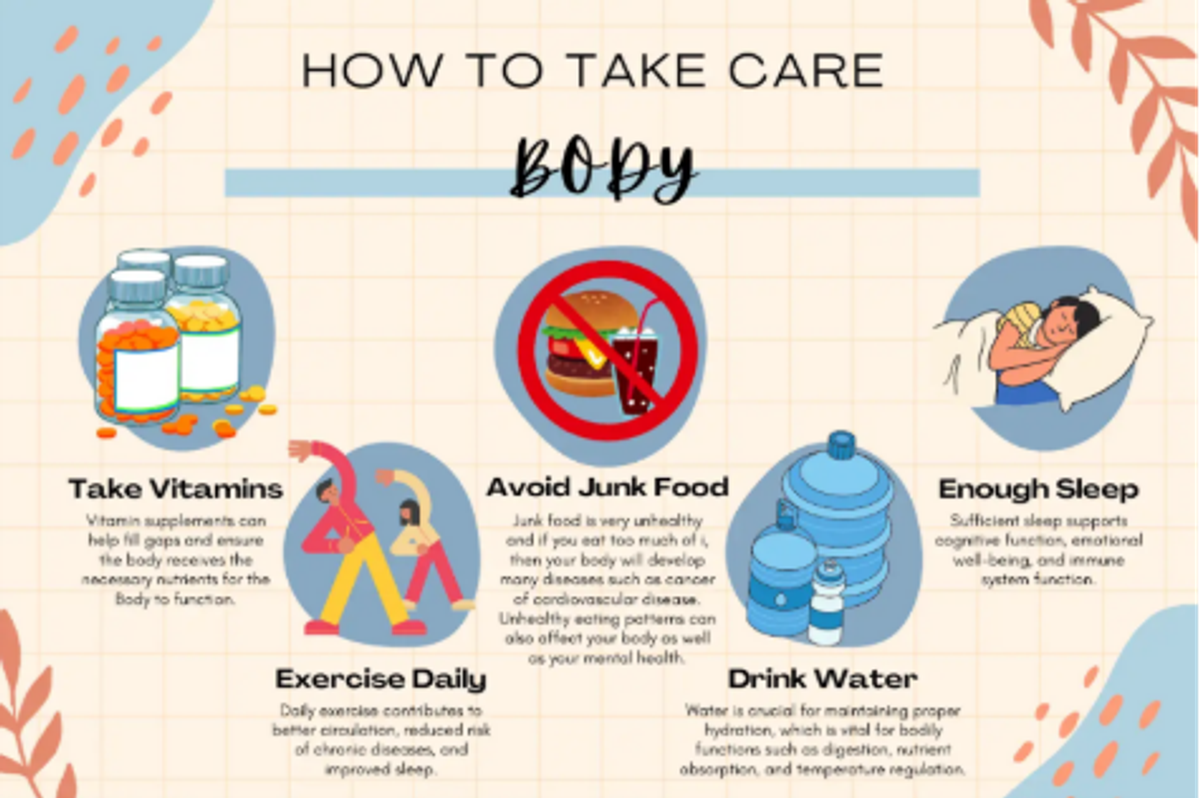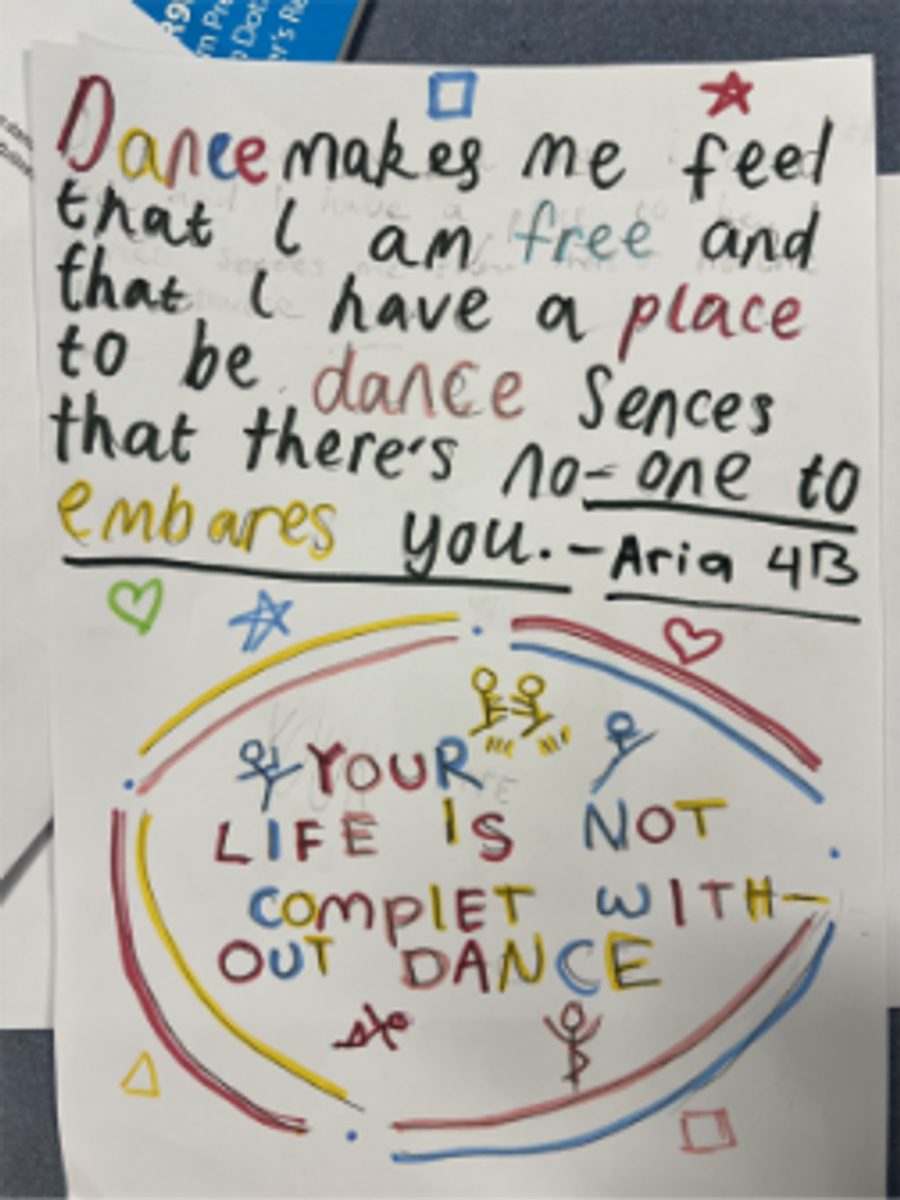Mind, Body, Us (MBU)

In Term Four, students from Prep to Year Six embark on an exciting journey exploring how to keep their minds and bodies healthy, safe, and strong! From learning about body parts, growth, and personal hygiene in the early years, to investigating health messages, food choices, physical activity, safety, and wellbeing in the upper years, students develop knowledge and skills to make positive choices for themselves and others. They explore how health messages influence behaviour, practise assertive communication, and consider cultural and community perspectives on wellbeing. Across all year levels, students engage in hands-on projects, creative posters, role-plays, and campaigns to apply what they learn, culminating in celebrations where they share their health messages and achievements with peers and the school community.
Prep
In Term Four, the Prep students will learn all about their amazing bodies and how to keep them safe and healthy. They begin by naming body parts, noticing how their bodies have grown and changed, and discovering ways to care for themselves through food, rest and hygiene. They also learn about personal space, body safety and the importance of healthy habits. In the second half of the term, students explore health and safety symbols in the community, meet the helpers who keep us safe and practise making healthy choices every day. The term concludes with students creating and sharing posters, chants or performances to celebrate and communicate their learning about health and safety.
Curriculum Links:
- Name parts of the body and describe how their body is growing and changing VC2HPFP02
- Identify health symbols, messages and strategies in their community that support their health and safety VC2HPFP07
Key Vocabulary: body awareness, healthy habits, safety symbols, community helpers, safe choices.
Year 1
In Term Four, the Year One students explore health messages in their school and community and learn how these messages help them make healthy choices. Early in the term, they identify signs, posters, and labels around them, linking these messages to staying active, choosing healthy foods and drinks, washing hands, wearing sunscreen, and keeping safe. In the second half of the term, students plan and create projects to share a health message with others, using posters, role-plays, songs, or booklets. The term concludes with a mini “Health Expo” where students celebrate their learning and demonstrate how to make healthy choices.
Curriculum Links:
- Investigate a range of health messages and strategies in their community to promote their own health, safety and wellbeing VC2HP2P07
Key Vocabulary: health messages, healthy choices, food & drink, staying active, community safety.
Year 2
In Term Four, the Year Two students explore health messages and strategies that help people stay healthy and safe. They begin by investigating the purpose of health messages at school and in the community, including strategies for sun safety, nutrition, physical activity, and online or road safety. Students analyse how these strategies support wellbeing and make choices that keep themselves and others safe. In the second half of the term, they design and create their own health campaigns, using posters, videos, or performances to share important health messages with peers, families, and the wider community. The term concludes with a “Health Campaign Showcase” where students celebrate their projects.
Curriculum Links:
- Investigate a range of health messages and strategies in their community to promote their own health, safety and wellbeing VC2HP2P07
Key Vocabulary: health messages, wellbeing strategies, sun safety, nutrition, health campaign.
Year 3
In Term Four, the Year Three students explore health messages and learn how to use them to keep their bodies strong and healthy. In the first part of the term, they identify different types of health information from school, community, and media sources, understand why messages are created, and investigate how advertisements and food labels influence their choices. In the second part of the term, students apply this knowledge by exploring safety and wellbeing messages, evaluating reliable information, and reflecting on how health messages guide their personal choices. The term concludes with students creating their own health messages through posters, slogans, or skits to share with peers and encourage healthy habits.
Curriculum Links:
- Interpret the nature and intention of health information and messages in their community, and reflect on how these influence personal decisions and behaviours VC2HP4P09
Key Vocabulary: health messages, healthy choices, food labels, safety messages, physical activity.
Year 4
In Term Four, the Year Four students explore health messages and how they influence the choices we make for our bodies. Early in the term, they investigate different types of health information from school, community, and media sources, learning the purpose of messages and how they persuade or guide healthy behaviours. Students examine advertising techniques, interpret food labels, and analyse campaigns about routines, safety, and wellbeing. In the second half of the term, they apply this knowledge by evaluating reliable versus unreliable information, reflecting on how health messages shape their personal choices, and creating their own messages—through posters, comics, or digital slogans—to promote healthy habits within their community.
Curriculum Links:
- Interpret the nature and intention of health information and messages in their community, and reflect on how these influence personal decisions and behaviours VC2HP4P09
Key Vocabulary: health messages, persuasive advertising, food labels, safety messages, wellbeing.
Year 5
In Term Four, the Year Five students build their understanding of how to keep their bodies healthy and safe. Early in the term, they explore factors that influence health, including hygiene, nutrition, physical activity, friendships, and the importance of assertive communication when making safe choices. They also learn how Aboriginal and Torres Strait Islander kinship and community connections support wellbeing. In the second half of the term, students work in groups on a project to identify a health issue relevant to their school or community. They design, create, and present solutions—such as campaigns, posters, or performances—and then reflect on how these strategies can improve health and wellbeing.
Curriculum Links:
- Analyse how various strategies influence the health, safety, relationships and wellbeing of individuals and communities VC2HP6P10
Key Vocabulary: healthy choices, nutrition & physical activity, social wellbeing, assertive communication, community Health.
Year 6
In Term Four, the Year Six students explore how to keep themselves and others healthy, safe, and supported. In the first half of the term, they learn about healthy habits, personal hygiene, assertive communication, safe online behaviour, and how family and cultural practices – including Aboriginal and Torres Strait Islander kinship systems – contribute to wellbeing. In the second half of the term, students investigate and plan health promotion projects. They research credible health information, examine nutrition and sustainability, explore safety in different environments, and practise strategies for positive mental health. The term concludes with students presenting their own health promotion projects to share what they have learned with their peers.
Curriculum Links:
- Analyse how various strategies influence the health, safety, relationships and wellbeing of individuals and communities VC2HP6P10
- Plan and implement strategies, using health resources, to enhance their own and others’ health, safety, relationships and wellbeing VC2HP8P10
Key Vocabulary: healthy habits, assertive communication, online safety, cultural wellbeing, health promotion project.
How can you support your child’s Mind, Body & Us learning at home?
Prep – Year 2
Your little ones are learning about their amazing bodies, how to stay safe, and how everyday choices help keep them healthy.
- Talk about the body: Help your child name body parts, notice how they are growing, and discuss ways to stay healthy through food, sleep and hygiene.
- Teach personal safety: Practice understanding personal space, safe choices, and what to do if they feel unsafe.
- Explore health messages: Look at signs, labels, and posters together, and discuss how they guide healthy habits and safety.
Years 3 – 4
Children at this stage are developing the skills to think critically about health information and make informed choices.
- Think critically about information: Discuss advertisements, food labels, and online content, helping your child decide what information is trustworthy.
- Build healthy routines further: Encourage children to plan balanced meals, take part in physical activity, and practise personal hygiene independently.
- Get creative with health projects: Support your child to design posters, comics, or digital slogans to share health messages in their community.
Years 5 – 6
Older students are learning to make independent decisions, communicate assertively, and understand how wellbeing connects to family, culture, and community.
- Practice speaking up: Encourage assertive communication and safe decision-making in friendships and social situations.
- Discuss wellbeing and community: Talk about how family, friendships, cultural traditions, and community connections contribute to personal wellbeing.
- Celebrate learning: Display your child’s health projects at home and discuss what they’ve learned to reinforce healthy choices.

